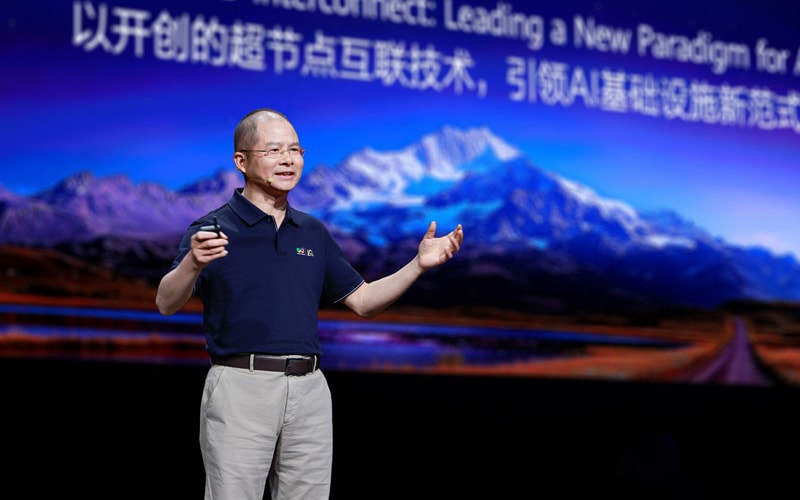Huawei’s SuperPoD: Revolutionizing AI Infrastructure with UnifiedBus 2.0
Huawei’s groundbreaking SuperPoD architecture promises to reshape the future of AI infrastructure by connecting thousands of AI chips into a single, massive, interconnected system. This innovative approach, unveiled at HUAWEI CONNECT 2025, moves beyond traditional server silos, enabling AI systems to “learn, think, and reason as one.” This isn’t just about speed; it’s about fundamentally altering how AI computing power is organized, scaled, and deployed across various industries.
UnifiedBus 2.0: The Key to Scalable AI
At the heart of Huawei’s SuperPoD is UnifiedBus 2.0 (UB). Huawei’s Yang Chaobin explains that UB deeply interconnects physical servers, transforming them into a single logical server capable of sophisticated AI tasks. This breakthrough tackles the critical challenges of large-scale AI computing:
- Long-range communication reliability: Traditional solutions struggle to maintain reliable communication over long distances. Huawei’s UnifiedBus, built on an optical network approach, addresses this by incorporating fault detection and protection switching at every layer of the OSI model, ensuring uninterrupted performance even over vast networks.
- Bandwidth-latency trade-off: By leveraging a robust optical-based infrastructure, Huawei’s SuperPoD achieves unprecedented interconnect bandwidth, surpassing the entire globe’s peak internet bandwidth. A critical improvement.
Atlas 950 and 960 SuperPods: Unprecedented Performance
The Atlas 950 SuperPoD, a flagship implementation, boasts 8 EFLOPS in FP8 and 16 EFLOPS in FP4. This impressive system, occupying 160 server cabinets, delivers a phenomenal interconnect bandwidth of 16PB/s and 1,152TB of memory with a low 2.1µs latency. The upcoming Atlas 960 SuperPoD promises even greater performance, scaled to 30 EFLOPS in FP8 and 60 EFLOPS in FP4, 4,460TB memory, and 34PB/s interconnect bandwidth, showcasing an exponential scaling potential.
Beyond AI: General-Purpose Computing Power
Huawei’s vision extends beyond AI. The TaiShan 950 SuperPoD leverages Kunpeng 950 processors to address enterprise challenges, offering an alternative to legacy mainframes and mid-range computers, particularly in the finance sector. This allows finance institutions to replace older database equipment with a powerful, scalable solution.
Open Architecture Strategy for Wider Adoption
Huawei’s commitment to an open architecture is arguably one of the most impactful aspects of this announcement. Recognizing the limitations of current semiconductor manufacturing, Huawei has decided to release UnifiedBus 2.0 as an open standard.
This open source strategy is crucial for:
- Ecosystem Building: Encouraging wider industry participation and fostering a thriving ecosystem of developers and partners contributing to the SuperPoD’s evolution.
- Access for all: Enabling broader participation and innovation irrespective of access to top-tier semiconductor manufacturing.
Real-world Deployments and Future Potential
Early deployments of over 300 Atlas 900 A3 SuperPoD units across various industries—including finance and telecommunications—further reinforce Huawei’s claim of practical viability. Huawei’s open architecture strategy is set to challenge the dominance of tightly integrated, proprietary solutions seen in Western competitors. The potential for collaborative development and widespread adoption can reshape the competitive landscape of the global AI infrastructure market.
Looking Ahead
Huawei’s SuperPoD represents a quantum leap in AI infrastructure. The open-source release of its architecture and components will be a key factor in determining the future success of this paradigm shift. This revolutionary approach is poised to fundamentally change how we design, build, and scale AI systems worldwide.
Keywords: Huawei, SuperPoD, AI Infrastructure, UnifiedBus 2.0, AI chips, AI computing, scaling AI, large-scale AI, interconnect bandwidth, open architecture, Atlas 950, Atlas 960, TaiShan 950, AI ecosystem, general-purpose computing.

